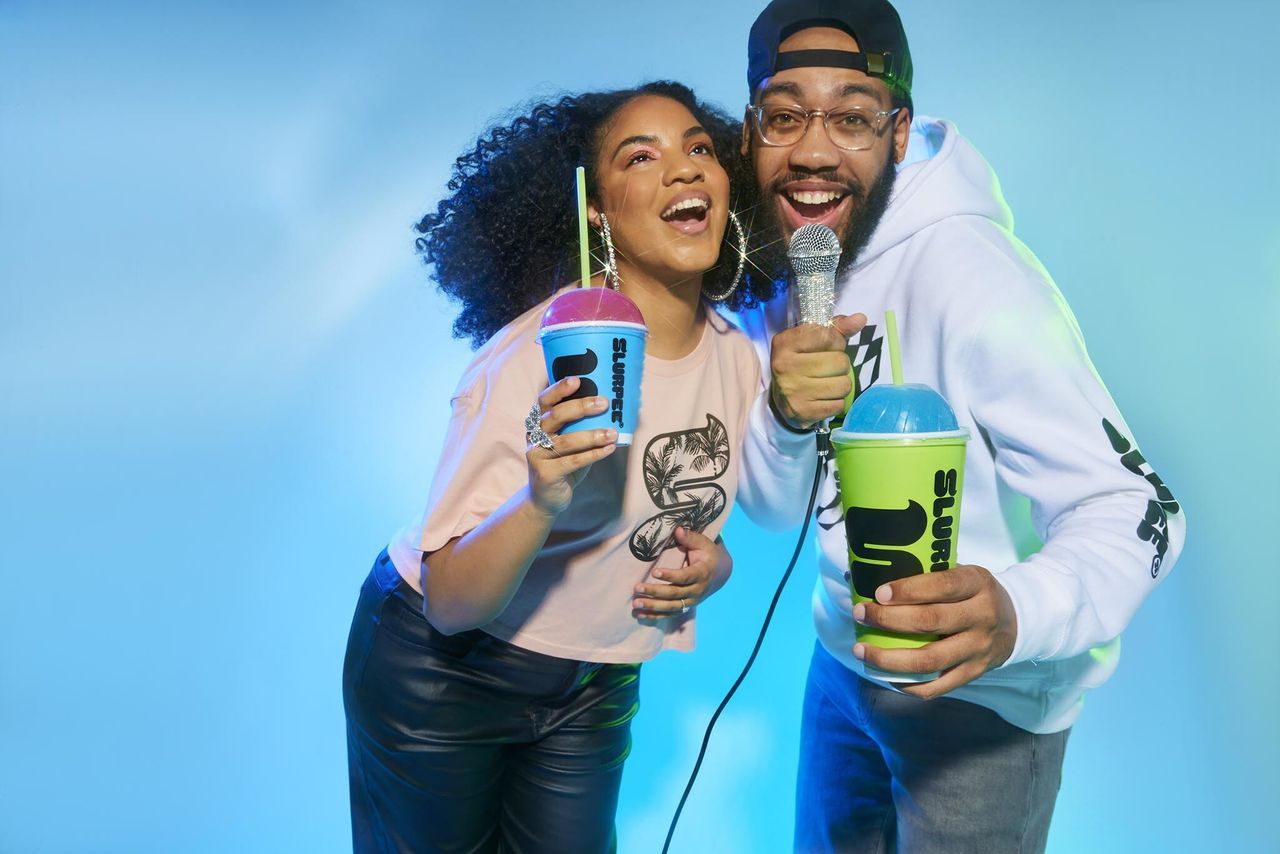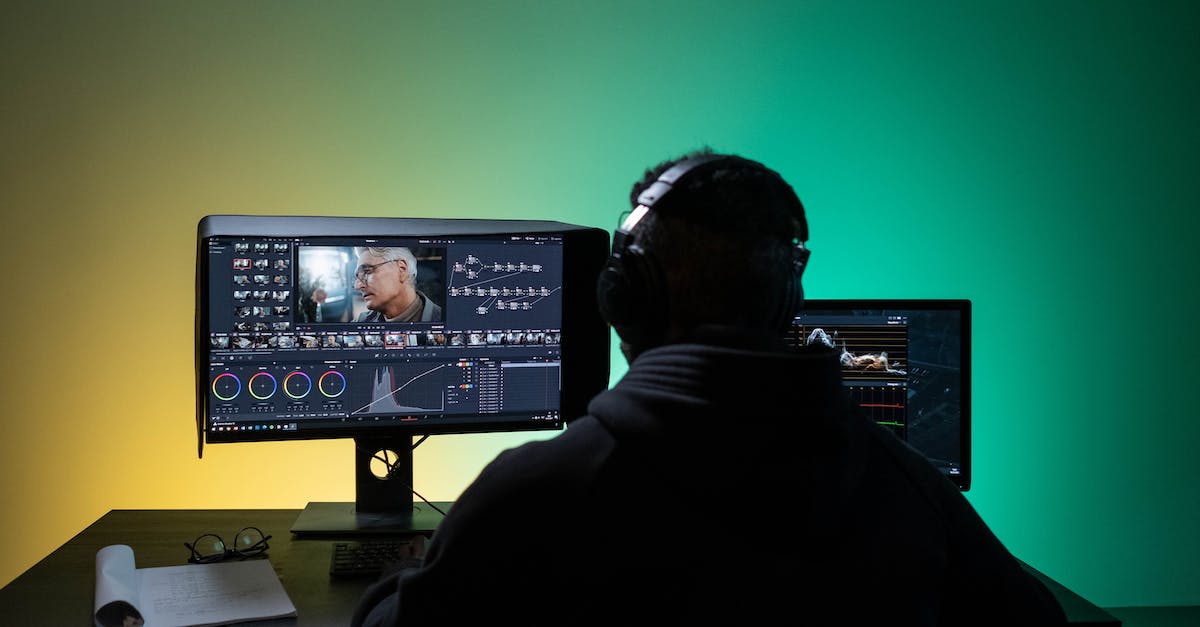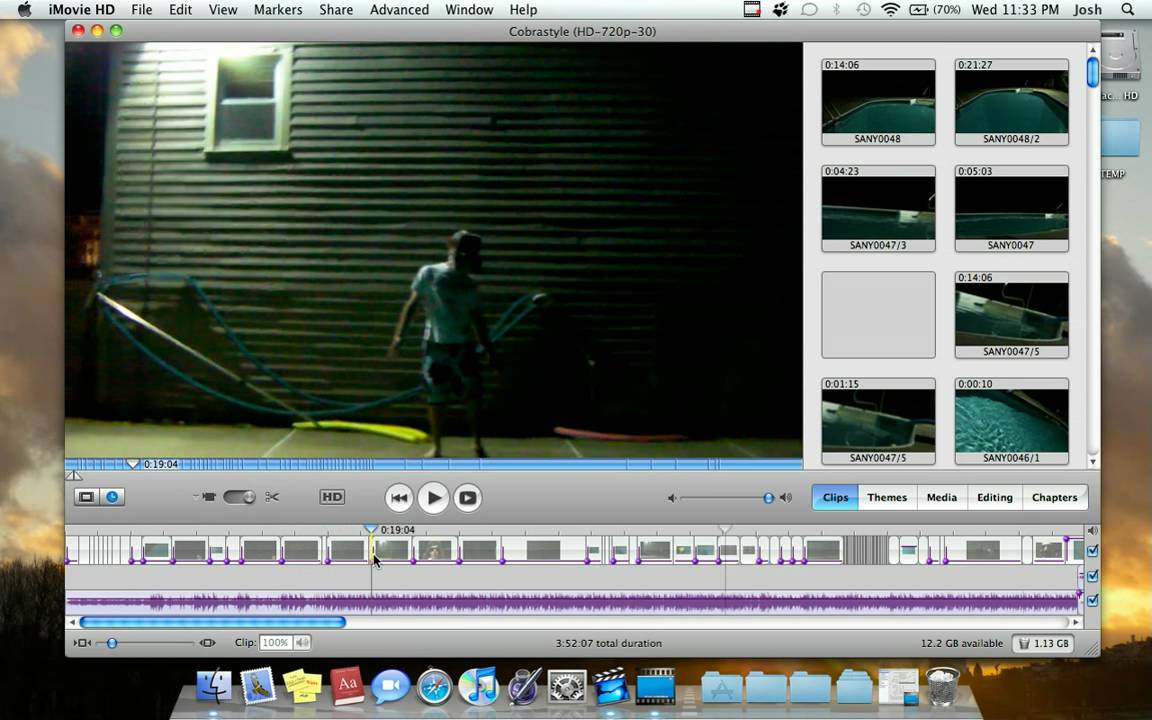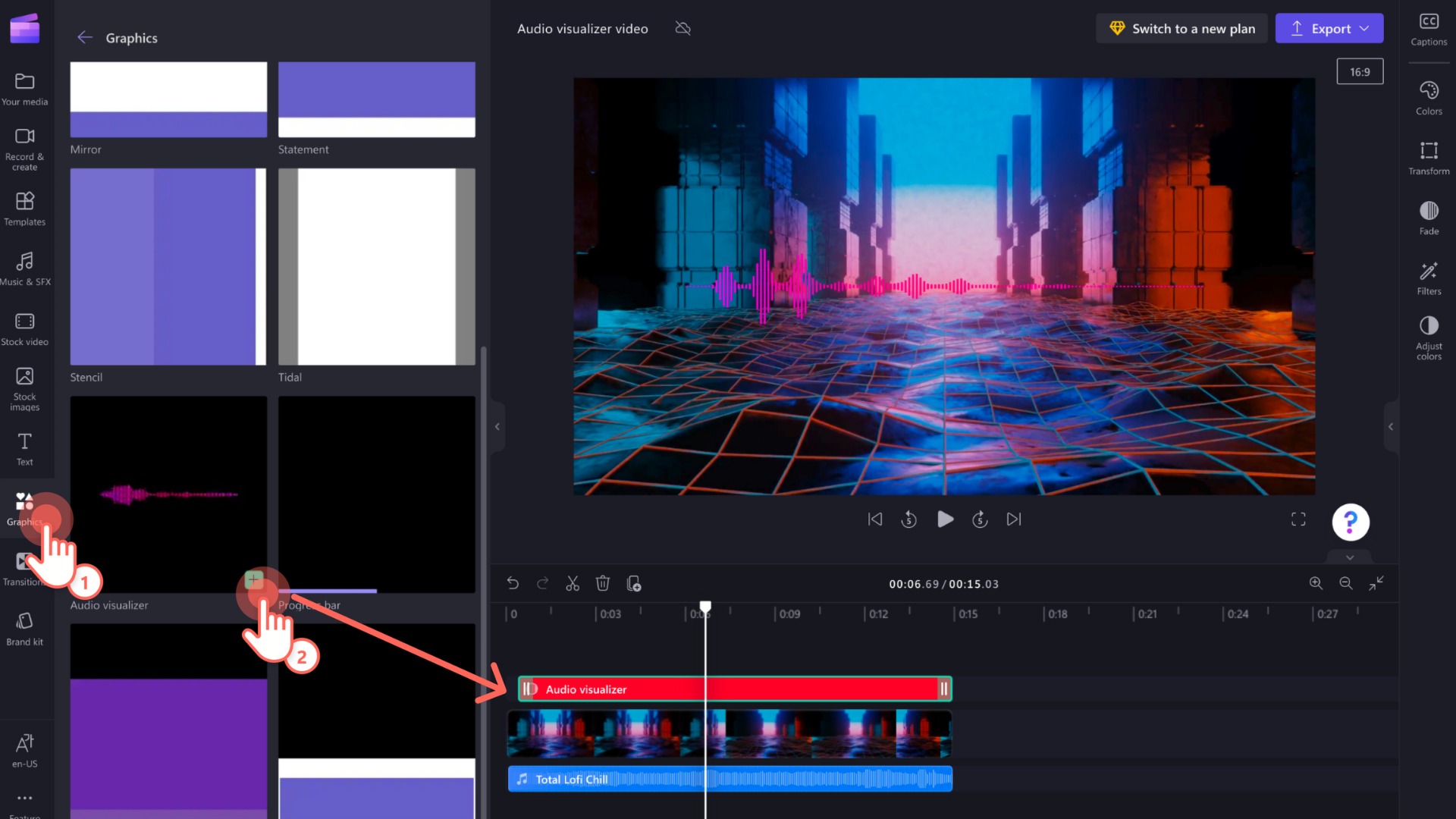Home>Production & Technology>Music Video>How To Be A Music Video Model
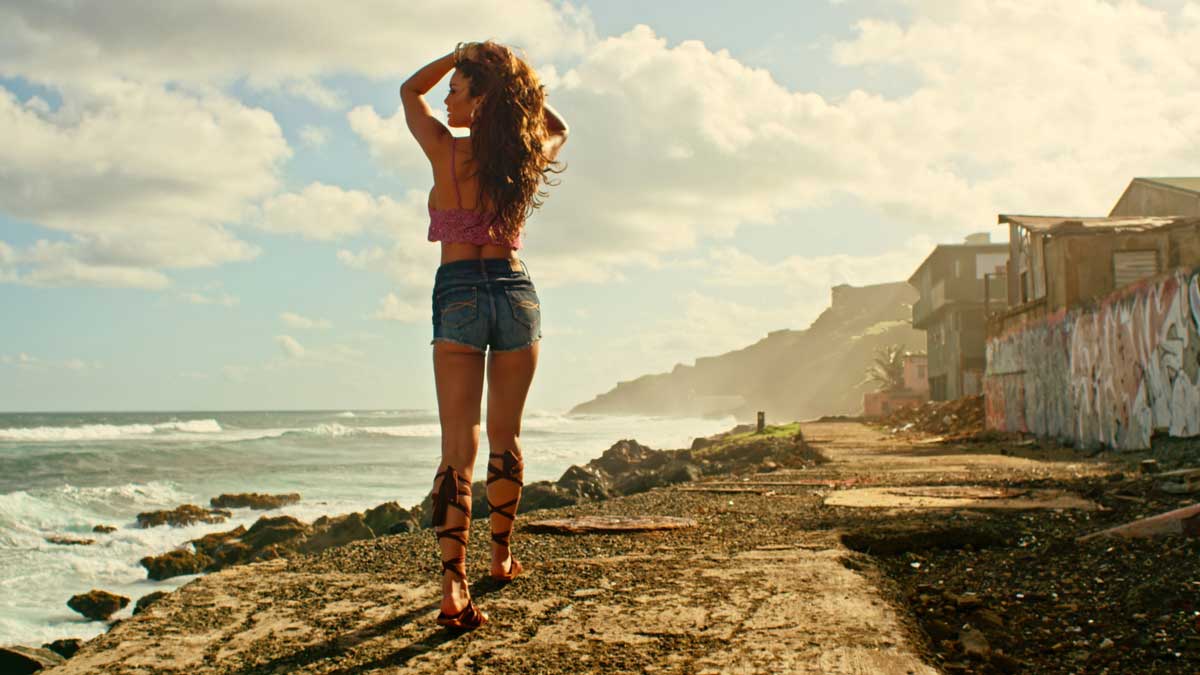

Music Video
How To Be A Music Video Model
Published: November 21, 2023
Learn how to become a music video model and make your dream of being in the spotlight a reality. Discover tips and tricks to stand out in the competitive world of music videos.
(Many of the links in this article redirect to a specific reviewed product. Your purchase of these products through affiliate links helps to generate commission for AudioLover.com, at no extra cost. Learn more)
Table of Contents
- Introduction
- Getting Started as a Music Video Model
- Preparing for a Music Video Shoot
- Mastering Posing and Body Language
- Understanding the Importance of Facial Expressions
- Working with Choreography and Dance Moves
- Managing Wardrobe and Styling
- Navigating the Set and Working with the Crew
- Maximizing Your Screen Time and Presence
- Taking Care of Yourself as a Music Video Model
- Advancing Your Career as a Music Video Model
- Conclusion
Introduction
Music videos have become an integral part of the music industry, gaining massive popularity and reaching millions of viewers worldwide. These visually captivating creations not only showcase the artist’s talent and creativity but also provide a platform for aspiring models to shine. If you have ever dreamed of being in the spotlight, strutting your stuff in front of the camera, and immersing yourself in the world of music, becoming a music video model might be the perfect path for you.
Being a music video model is not only about having a stunning appearance, but it also requires a certain level of skill and dedication. In this comprehensive guide, we will take you through the necessary steps to kickstart your journey as a music video model. From how to get started to mastering the art of posing and body language, we will provide valuable insights and expert tips to help you succeed in this exciting industry.
Before we dive into the specifics, it’s important to understand the unique nature of music videos. Unlike other modeling gigs, music videos allow for a wide range of creativity and storytelling. They offer the chance to showcase your personality, express emotions, and bring the artist’s vision to life.
Each music video presents a unique theme, concept, and choreography, creating endless opportunities for models to showcase their talent and capture the audience’s attention. It’s crucial to be adaptable, versatile, and open-minded as you navigate through different genres, styles, and artistic visions.
Now, let’s take the first step towards your dream of becoming a music video model – getting started!
Getting Started as a Music Video Model
If you’re eager to enter the world of music videos as a model, it’s important to take strategic steps to kickstart your career. Here are some essential tips to help you get started:
1. Build your portfolio: Start by creating a portfolio that showcases your unique look and versatility. Include professional headshots and full-body shots that highlight your best features and demonstrate your ability to portray different emotions and styles. Consider collaborating with aspiring photographers and makeup artists to build a diverse and eye-catching portfolio.
2. Network with industry professionals: Attend modeling and music industry events, join online communities, and connect with professionals in the field. Build relationships with photographers, casting directors, and talent agents to increase your chances of landing music video opportunities. Social media platforms like Instagram can also be powerful tools for networking and showcasing your talent.
3. Research music videos and artists: Familiarize yourself with different music genres and pay attention to current music video trends. Study the work of music video directors and artists whose visual style aligns with your own. This will not only help you understand the industry better but also enable you to tailor your approach and showcase yourself as a perfect fit for specific projects.
4. Attend casting calls and auditions: Keep an eye out for casting calls and auditions specifically for music videos. Show up prepared, dressed appropriately, and ready to showcase your talent. Be confident, but also be willing to take direction and adapt to the vision of the director and artist.
5. Collaborate with local artists and bands: Look for opportunities to collaborate with local musicians and bands. Offer your modeling services for their music videos, as this can help you gain experience and exposure. By working with emerging artists, you can build your reputation and increase your chances of being noticed by industry professionals.
6. Be persistent and patient: Breaking into the music video modeling industry may take time, so it’s important to stay persistent and patient. Rejection is common in any competitive field, but don’t let it discourage you. Keep improving your skills, expanding your network, and seizing new opportunities.
By following these steps, you will be well on your way to launching your career as a music video model. Remember, success in this industry requires dedication, determination, and a willingness to continuously learn and grow. Stay focused and seize every opportunity that comes your way!
Preparing for a Music Video Shoot
As a music video model, it’s crucial to be well-prepared before stepping onto the set. Here are some essential steps to help you prepare for a music video shoot:
1. Understand the concept and storyline: Familiarize yourself with the concept and storyline of the music video. Study the lyrics, listen to the song, and discuss the director’s vision with the production team. Understanding the narrative will enable you to better align your performance and expressions with the overall theme.
2. Practice your poses and movements: Depending on the style of the music video, you may need to learn specific poses, dance moves, or choreography. Practice these in advance to ensure you’re comfortable and confident on the shoot day. You can work with a dance instructor, practice in front of a mirror, or watch tutorial videos to improve your skills.
3. Take care of your appearance: Make sure to take care of your physical appearance leading up to the shoot. Get plenty of rest, hydrate, and nourish your body with healthy foods. If there are any specific requirements, such as a specific hairstyle or makeup look, follow the instructions provided by the production team and come prepared.
4. Coordinate your wardrobe: Discuss wardrobe options with the production team and ensure that you bring the appropriate outfits to the shoot. Pay attention to the style, color scheme, and overall aesthetic of the music video. Bring a variety of clothing options to allow for flexibility and different looks on set.
5. Practice facial expressions: Facial expressions are crucial in conveying emotions and capturing the attention of viewers. Experiment with different expressions in front of a mirror to find the perfect balance between conveying the desired emotion and maintaining authenticity. Remember to practice conveying these expressions while also considering the energy and movement required for each scene.
6. Familiarize yourself with the technical aspects: Gain a basic understanding of the technical aspects of video shoots. Learn about camera angles, lighting conditions, and how to work effectively with the camera crew. This knowledge will help you understand how to position yourself and make the most out of each shot.
7. Maintain a positive mindset: On the day of the shoot, come with a positive and professional attitude. Be open to feedback and direction from the director and production team. Stay focused, stay confident, and enjoy the experience, as your attitude on set can greatly influence the outcome and your overall performance.
By following these preparation steps, you will be ready to shine on the music video set. Remember, adequate preparation will not only enhance your performance but also demonstrate your professionalism and dedication to the project. Good luck and have fun!
Mastering Posing and Body Language
As a music video model, your ability to pose and convey emotions through your body language is crucial. Here are some tips to help you master posing and body language for a music video shoot:
1. Understand the mood and tone: Each music video has its own mood and tone that you need to capture through your body language. Whether it’s a high-energy dance scene or a poignant emotional moment, understanding the desired mood will help you align your body language accordingly.
2. Use body angles and lines: Experiment with different body angles and lines to create visually pleasing compositions. Think about the shapes you can create with your body to add depth and dimension to the scene. For example, elongating your limbs or creating diagonal lines can add a dynamic element to the shot.
3. Pay attention to posture: Good posture is essential in photography and videography. Stand tall, elongate your spine, and engage your core muscles to maintain a strong and confident posture. Avoid slouching or appearing too rigid, as it can make your poses look unnatural.
4. Express emotions through your body: Your body language should effectively convey the desired emotions of the music video. Allow yourself to feel the emotions and let them radiate through your movements. Whether it’s joy, sadness, or sensuality, let your body language amplify the intended message.
5. Be aware of your hand and arm placement: Pay attention to your hand and arm placement. Avoid letting your limbs hang awkwardly by keeping them relaxed and natural. Experiment with different hand gestures or positions that enhance the overall composition and flow of the music video.
6. Engage your eyes and gaze: Your eyes are a powerful tool for expressing emotions and connecting with viewers. Practice different ways to engage your eyes and find the right intensity for each scene. Eye contact with the camera or other performers can add depth and intimacy to the shot.
7. Take direction and adapt: Be open to direction from the director and production team. They might have specific ideas or poses in mind. Be willing to adapt and try different poses and movements to achieve the desired look and feel of the music video.
8. Practice, practice, practice: Like any skill, mastering posing and body language takes practice. Take the time to practice different poses, experiment with your body movements, and observe yourself in the mirror. This will help you become more comfortable in front of the camera and understand how your body translates on screen.
Mastering posing and body language is an ongoing process. It takes time, patience, and self-awareness to develop your unique style and adapt to different music video concepts. With practice and perseverance, you can become a highly skilled and sought-after music video model.
Understanding the Importance of Facial Expressions
Facial expressions play a vital role in conveying emotions and capturing the attention of viewers in a music video. Here’s why understanding and mastering facial expressions are crucial for a music video model:
1. Conveying Emotions: Facial expressions are the window to our emotions. In a music video, you are tasked with translating the emotions portrayed in the song into visual form. Whether it’s joy, sadness, anger, or love, your ability to convey those emotions authentically through your facial expressions is essential.
2. Connecting with the Audience: Music videos have the power to evoke strong emotions in the audience. By mastering facial expressions, you can establish a deeper connection with the viewers, drawing them into the narrative and making them feel the emotions being portrayed. This connection can captivate and resonate with the audience, leaving a lasting impact.
3. Enhancing the Storytelling: Music videos often tell a story or convey a message. Your facial expressions can enhance the storytelling by helping to communicate key plot points, character development, or the overall theme of the music video. A subtle smile, a tear rolling down your cheek, or a look of determination can add layers of depth and nuance to the visual narrative.
4. Amplifying the Artist’s Vision: Each music video is an artist’s creative vision brought to life. Your facial expressions play a crucial role in amplifying and embodying that vision. By understanding the artist’s intentions and portraying their desired emotions accurately, you contribute to the overall artistic integrity of the music video.
5. Standing Out from the Crowd: In a highly competitive industry, the ability to express a wide range of emotions through facial expressions can set you apart from other models. Casting directors and talent agencies look for models who can effectively capture the essence of a song and engage the audience through their facial expressions. Mastering this skill can increase your chances of getting booked for music video projects.
6. Maintaining Authenticity: While mastering facial expressions is crucial, it’s equally important to maintain authenticity. Don’t just focus on creating exaggerated or dramatic expressions. Instead, allow the emotions to flow naturally and reflect your own experiences and understanding. The more genuine and authentic you are, the more relatable and impactful your expressions will be.
7. Practicing and Refining: Facial expressions are a skill that can be practiced and refined over time. Spend time in front of a mirror exploring different emotions and expressions. Study the way your face moves and how certain expressions are achieved. Experiment with subtlety and intensity to find the right balance for each scene.
Understanding the importance of facial expressions and honing your ability to convey emotions authentically will make you a valuable and impactful music video model. Remember that practice, self-awareness, and a willingness to take direction will help you develop this skill and bring the artist’s vision to life.
Working with Choreography and Dance Moves
Many music videos incorporate choreography and dance moves to enhance the visual appeal and bring the song to life. As a music video model, it’s essential to know how to work with choreography and execute dance moves effectively. Here are some tips to help you master this aspect of music video modeling:
1. Learn the routine: If the music video involves a choreographed routine, take the time to learn and practice the moves. Attend rehearsals or work with a dance instructor to ensure you are comfortable with the choreography. Pay attention to the timing, rhythm, and intricate details of the dance routine.
2. Focus on precision and synchronization: When executing dance moves, precision and synchronization are key. Pay attention to details such as the placement of your feet, the angles of your arms, and the fluidity of your movements. Strive to be in sync with the other dancers or performers to create a visually appealing and cohesive performance.
3. Use your body to convey the rhythm: Dance moves are not just about executing the steps, but also about expressing the rhythm and energy of the music. Use your body to accentuate the beats and musicality of the song. Employ fluid movements, dynamic poses, and sharp transitions to create a captivating performance.
4. Showcase your personal style: While working with choreography, it’s important to infuse your own unique style and personality into the dance moves. Adding your personal flair and interpretation can make your performance stand out and create a memorable impact. However, always ensure that your personal style aligns with the vision and concept of the music video.
5. Practice facial expressions during dance sequences: Dancing is not just about the body; it’s about expressing emotions through your facial expressions as well. Pay attention to your facial expressions during dance sequences and make sure they align with the mood and emotion of the music. Practice conveying the desired emotions while maintaining the energy and technicality of the dance moves.
6. Take care of your body: Dancing can be physically demanding, so it’s important to take care of your body. Stay hydrated, stretch before and after rehearsals or shoots, and listen to your body’s needs. Avoid pushing yourself too hard and be mindful of any potential injuries. Taking care of your body will ensure that you can perform at your best and avoid any setbacks.
7. Be open to feedback and direction: Working with choreography requires collaboration and teamwork. Be receptive to feedback and direction from the choreographer, director, and other dancers. Use their guidance to improve your performance and make adjustments as necessary to deliver the desired outcome.
Remember, working with choreography and dance moves in a music video requires practice, dedication, and an understanding of the artistic vision. By honing your skills and working collaboratively, you can create visually captivating and energetic performances that complement the music and elevate the overall production.
Managing Wardrobe and Styling
When it comes to music video modeling, wardrobe and styling play a crucial role in bringing the artist’s vision to life and enhancing your overall performance. Here are some tips to help you manage wardrobe and styling effectively:
1. Understand the concept and theme: Familiarize yourself with the concept and theme of the music video. Understand the style, aesthetic, and overall vision the artist and director want to portray. This will guide your wardrobe and styling choices and ensure they align with the desired look and feel of the video.
2. Collaborate with the stylist or wardrobe team: Music videos often involve professional stylists or wardrobe teams who are responsible for selecting and coordinating outfits. Work closely with them to understand the wardrobe options, discuss your preferences, and provide input. Communicate openly about your comfort level, body type, and personal style to ensure that the wardrobe choices reflect your personality and enhance your performance.
3. Bring versatile clothing options: It’s always a good idea to bring a range of clothing options to the set. This allows for flexibility and ensures you have suitable outfits for different scenes or shots. Consider bringing a mix of casual, formal, and unique pieces that can be layered or mixed and matched to create various looks.
4. Consider the practicality of your wardrobe: While it’s important to look stylish, it’s equally important to consider the practicality of your wardrobe choices. Think about the movements or dance sequences you’ll be performing and choose clothing that allows you to move freely and comfortably. Ensure that your outfits don’t restrict your range of motion or cause any potential wardrobe malfunctions.
5. Pay attention to color and coordination: Consider the color palette of the music video and aim for cohesive and visually pleasing outfits. Coordinate your wardrobe choices with the location, lighting, and overall aesthetic of the video. Pay attention to how the colors and patterns of your clothing complement the set and create an appealing visual impact.
6. Pay attention to grooming and accessories: Personal grooming and accessories can greatly enhance your overall look on camera. Ensure that your hair and makeup are styled appropriately to match the concept of the video. Consider accessorizing with jewelry, hats, scarves, or any other items that add flair and personality to your outfits.
7. Be proactive and organized: Take the initiative to keep your wardrobe organized and well-maintained during the shoot. Have a designated area for your clothing and make sure it’s kept clean and wrinkle-free. Communicate any concerns or issues with the wardrobe team promptly to address them before they become a problem.
8. Embrace versatility and adaptability: As a music video model, you may be required to change outfits multiple times or adapt to different styling choices. Embrace the versatility and be open to trying new looks or experimenting with different styles. Be willing to take direction from the stylist or director and trust their expertise in creating the desired visual impact.
By effectively managing wardrobe and styling, you contribute to the overall visual appeal and cohesiveness of the music video. Collaboration, communication, and attention to detail are key in ensuring that your outfits reflect the concept of the video and enhance your performance as a music video model.
Navigating the Set and Working with the Crew
A successful music video shoot relies on teamwork and collaboration. As a music video model, navigating the set and working effectively with the crew is essential. Here are some tips to help you navigate the set and build positive working relationships with the crew:
1. Familiarize yourself with the set: Take the time to explore the set and familiarize yourself with the different locations and props. This will help you feel more comfortable and confident when it’s time to shoot. Understand any safety guidelines or restrictions and follow them diligently to ensure a smooth and successful shoot.
2. Communicate openly and respectfully: Effective communication is key to a successful shoot. Be proactive in asking questions and seeking clarification if something is unclear. Treat the crew and fellow performers with respect, kindness, and professionalism. Building positive relationships and maintaining a friendly demeanor can create a harmonious and productive working environment.
3. Be flexible and adaptable: Music video shoots often involve changing conditions and unexpected challenges. Be prepared to adapt and adjust your performance or schedule as needed. Stay positive and embrace the flexibility required to ensure the best possible outcome for the project.
4. Follow directions and take feedback gracefully: Listen carefully to the director, choreographer, and other crew members and follow their instructions diligently. Be open to feedback and take it constructively. Show your willingness to learn and improve your performance based on their guidance. This will not only contribute to a smoother shoot but also showcase your professionalism and dedication to the project.
5. Collaborate and support others: Remember that you are part of a team, and everyone’s contributions are integral to the success of the music video. Offer assistance when needed and be supportive of your fellow performers and crew members. Establishing positive working relationships can create a supportive and productive atmosphere on set.
6. Stay focused and organized: Music video shoots can be fast-paced and hectic. Stay focused and organized by being prepared and attentive to the schedule and instructions. Arrive on time, keep track of your wardrobe, and be aware of any changes or updates communicated by the crew. Being reliable and attentive will make you a valuable asset to the team.
7. Express gratitude: Show appreciation to the crew for their hard work and contributions. Recognize their efforts and express gratitude for the opportunity to be a part of the music video. Building positive connections and showing appreciation can leave a lasting impression and increase your chances of being recommended for future projects.
By effectively navigating the set and working harmoniously with the crew, you contribute to a successful music video shoot. Remember to approach each day with professionalism, respect, and a willingness to collaborate, resulting in a memorable and enjoyable experience for everyone involved.
Maximizing Your Screen Time and Presence
As a music video model, maximizing your screen time and presence is crucial for making a lasting impact on the audience. Here are some tips to help you make the most out of your time on screen:
1. Understand your role: Gain a clear understanding of your role in the music video. Whether you’re the lead model, a background dancer, or part of a group, knowing your role will help you determine how to maximize your presence. Understand the story and how you fit into the narrative, allowing you to shine in your moments on screen.
2. Connect with the camera: The camera is your conduit to the audience, so make a connection with it. Focus on projecting your energy and emotions through the lens. Maintain eye contact, engage with the camera, and let your expressions and body language convey the intended emotions. Connecting with the camera will enhance your presence and draw the audience in.
3. Show confidence and charisma: Confidence and charisma are key attributes to command attention on screen. Believe in yourself and your abilities, and let that confidence shine through your performance. Maintain a positive and energetic demeanor that captivates the audience and leaves a lasting impression.
4. Utilize your unique qualities: Embrace your unique qualities and incorporate them into your performance. Whether it’s your style, personality, or dance skills, showcasing what makes you stand out will make your screen time memorable. Capitalize on your strengths and make them part of your on-screen presence.
5. Be expressive: Use your body language, facial expressions, and gestures to express emotions and captivate the audience. Experiment with different levels of intensity and dynamics to make your presence more engaging. Be bold, dynamic, and expressive in your movements to leave a lasting impression.
6. Be mindful of your surroundings: Pay attention to the overall composition and the other performers on set. Find ways to interact and complement their movements while still maintaining your own presence. This harmonious collaboration will elevate the overall performance and create a visually captivating experience for the audience.
7. Embrace the spotlight moments: Identify the key moments in the music video where you have the spotlight. These are the moments where you can truly shine and leave a lasting impression. Give these moments your all, channeling your energy, charisma, and talent to captivate the audience and make those moments memorable.
8. Embody the essence of the music: The music is the backbone of the music video, so allow yourself to fully embody the essence and energy of the song. Let the music guide your movements, expressions, and overall performance. Feel the rhythm and let it flow through your body, creating a captivating connection between you, the music, and the audience.
By following these tips, you can maximize your screen time and presence in a music video. Remember to stay true to yourself, be confident, and embrace the opportunity to showcase your talent and charisma. With these qualities, you’ll leave a lasting impression on the audience and create a powerful presence on screen.
Taking Care of Yourself as a Music Video Model
As a music video model, taking care of yourself is crucial for maintaining your physical and mental well-being. Here are some tips to help you prioritize self-care:
1. Prioritize rest and relaxation: Music video shoots can be physically and mentally demanding, so it’s important to prioritize rest and relaxation. Get enough sleep, especially before a shoot, to ensure you have the energy to perform at your best. Dedicate time to unwind, engage in activities that bring you joy, and find moments of tranquility amidst the hectic schedule.
2. Maintain a healthy lifestyle: Fuel your body with a balanced diet and stay hydrated to keep your energy levels high. Incorporate regular exercise into your routine to stay fit and energized. Taking care of your physical health will not only enhance your performance but also boost your confidence and overall well-being.
3. Practice self-care rituals: Engage in self-care rituals that promote relaxation, such as meditation, deep breathing exercises, or taking soothing baths. Find activities that help you de-stress and rejuvenate, allowing you to maintain a positive mindset and approach each shoot with a renewed sense of enthusiasm.
4. Listen to your body: Pay attention to your body’s signals and give yourself the necessary care and attention. If you’re feeling fatigued, take breaks when needed. If you’re experiencing discomfort or pain, address it promptly and seek appropriate care. Prioritize your overall well-being over pushing yourself beyond your limits.
5. Practice positive affirmations: Boost your confidence and self-esteem by practicing positive affirmations. Remind yourself of your unique qualities, talents, and the value you bring to the music video. Embrace self-love and self-acceptance, as they will shine through in your performance.
6. Seek support: Surround yourself with a supportive network of friends, family, or fellow models who understand the challenges of the industry. Share your experiences, seek advice, and lean on each other for support. Having a strong support system can provide guidance, encouragement, and a sense of belonging.
7. Set boundaries: Establish boundaries to protect your physical and mental well-being. Communicate your limits, whether it’s regarding working hours, wardrobe choices, or your comfort level with certain scenes or images. It’s important to advocate for yourself and ensure that your needs are respected throughout the music video production process.
8. Take breaks from the industry: It can be beneficial to take breaks from the industry to recharge and maintain a healthy work-life balance. Engage in hobbies, pursue other interests, and spend quality time with loved ones. These breaks can rejuvenate your creativity and passion for music video modeling.
Remember, taking care of yourself is not only essential for your well-being but also contributes to your long-term success as a music video model. Prioritize self-care, listen to your body, and establish boundaries to ensure a sustainable and fulfilling career. By nurturing yourself, you’ll bring your best self to each music video project.
Advancing Your Career as a Music Video Model
Becoming a successful music video model requires dedication, perseverance, and a strategic approach to advancing your career. Here are some tips to help you take your music video modeling career to the next level:
1. Expand your portfolio: Continuously update and expand your portfolio with new photos and videos that showcase your versatility, creativity, and ability to embody different styles and moods. Collaborate with aspiring photographers, makeup artists, and stylists to create captivating visuals that highlight your unique look and talent.
2. Network with industry professionals: Attend industry events, fashion shows, and music video screenings to connect with industry professionals, including directors, producers, casting agents, and fellow models. Build genuine relationships by staying engaged, following up, and maintaining a professional presence on social media platforms.
3. Seek representation: Consider obtaining representation from a modeling agency or talent agency. An agent can help you navigate the industry, secure auditions and bookings, negotiate contracts, and provide guidance on developing your career. Research reputable agencies that work with music video models and submit your portfolio for consideration.
4. Stay updated with industry trends: Keep up-to-date with the latest music video trends, styles, and directors. Follow music video channels, industry blogs, and social media accounts of industry professionals to stay informed about new projects and emerging artists. This knowledge will help you align your skills and portfolio with current industry demands.
5. Take acting and dance classes: Enhance your skills and versatility by taking acting and dance classes. Developing these additional talents can open doors for more diverse and complex music video roles. Acting classes can help you express emotions convincingly, while dance classes allow you to execute choreography with grace and precision.
6. Seek feedback and learn from each experience: Actively seek feedback from directors, choreographers, and fellow performers after each music video project. Learn from their critiques and apply them in future projects to continually improve your performance. Embrace a growth mindset and view each experience as an opportunity to learn and grow as an artist.
7. Collaborate with emerging and established artists: Seek opportunities to collaborate with both emerging and established artists within the music industry. Working with emerging artists can provide exposure and the chance to enhance your creative input, while collaborating with established artists can elevate your profile and open doors to high-profile projects.
8. Be adaptable and versatile: Embrace versatility and be willing to explore different genres, styles, and concepts. Demonstrating your ability to adapt to various projects will make you more appealing to directors, casting agents, and artists. Embrace new challenges and push the boundaries of your comfort zone to continually expand your horizons.
9. Embrace social media and online presence: Utilize social media platforms, such as Instagram and YouTube, to showcase your work, engage with followers, and attract potential clients. Create a branding strategy that aligns with your vision and target audience. Consistently share captivating content, including behind-the-scenes footage and personal insights, to build a strong online presence.
10. Stay determined and persevere: Building a successful music video modeling career takes time and perseverance. Stay determined, remain focused on your goals, and keep honing your craft. Celebrate your successes, learn from setbacks, and stay dedicated to your craft, knowing that each step forward brings you closer to achieving your dreams.
By implementing these strategies, staying committed to your craft, and continuously pushing yourself to grow, you can advance your career as a music video model. Remember, success in this industry requires patience, hard work, and a genuine passion for the art of music video modeling. Seize opportunities, stay motivated, and never stop striving for excellence.
Conclusion
Becoming a music video model is an exciting and rewarding journey that offers endless opportunities for creativity and self-expression. Through this comprehensive guide, we have explored the essential steps to kickstart your career, master the art of posing and body language, convey emotions through facial expressions, work with choreography and dance moves, manage wardrobe and styling, navigate the set and collaborate with the crew, maximize your screen time and presence, prioritize self-care, and advance your career.
As you embark on your music video modeling journey, remember to always stay true to yourself and your unique style. Embrace the challenges, take risks, and continually hone your craft. Building a successful career in music video modeling requires dedication, perseverance, and a strong work ethic.
Continue to expand your portfolio, network with industry professionals, and seize every opportunity that comes your way. Embrace growth and learning, and strive to continually improve your skills, whether it’s through acting classes, dance workshops, or collaborations with fellow artists.
Take care of your physical and mental well-being, maintaining a healthy lifestyle, and prioritizing self-care. Remember that your success as a music video model goes beyond external factors – it also lies within your confidence, charisma, and ability to connect with the audience through your art.
Finally, be patient and persistent. The path to success may not always be easy, but with determination, perseverance, and a positive mindset, you can make your mark in the dynamic and exhilarating world of music video modeling.
So take that first step, believe in yourself, and let your talent shine. Harness the power of music, express yourself, and captivate audiences through your artistry as a music video model. Your journey starts now. Good luck!

